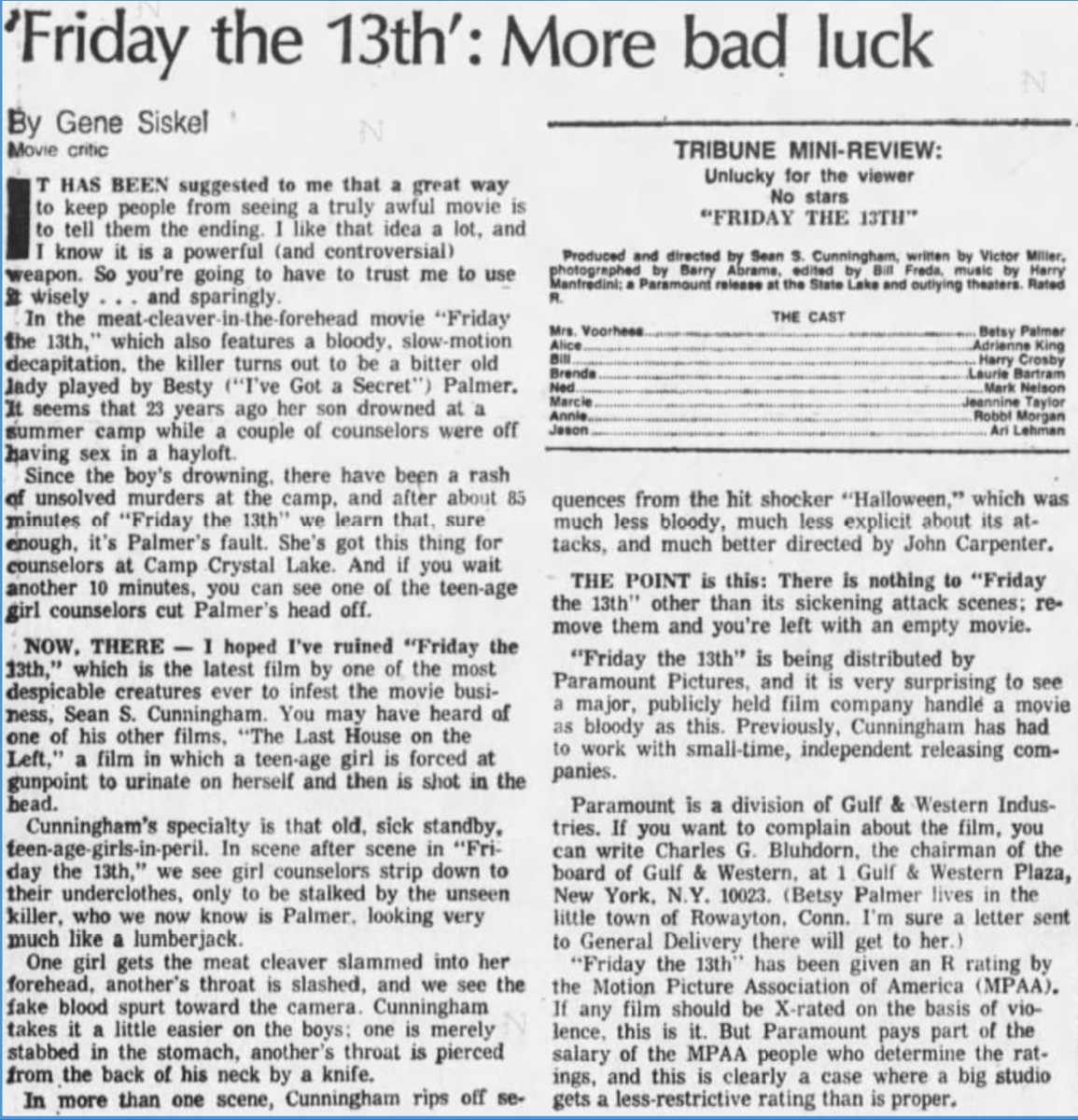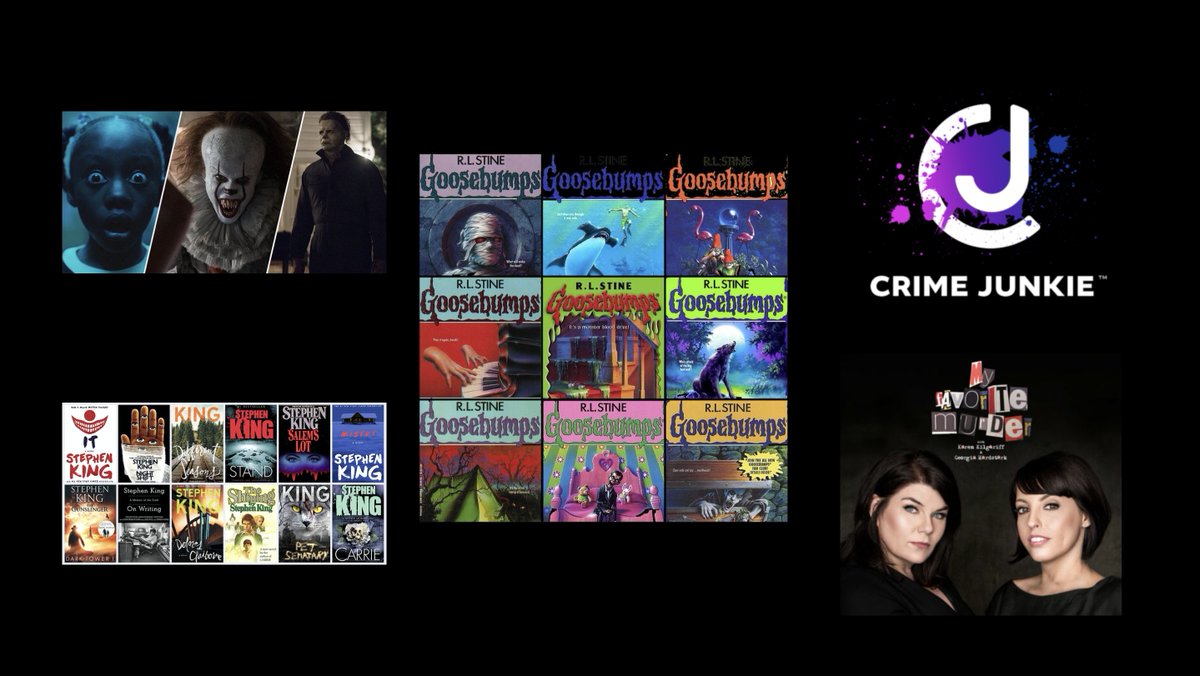
👹What makes a horror villain psychologically appealing?👹
There are an almost endless number of ways that a horror monster can be built, yet most of them share some common features.
So, what are some of the shared features of a successful horror villain?
1/🧵
There are an almost endless number of ways that a horror monster can be built, yet most of them share some common features.
So, what are some of the shared features of a successful horror villain?
1/🧵

Let's start with the weapon.
The weapon of choice for horror villains varies quite a lot, but they all share one common feature: Sharp edges.
Machetes, knives, razor gloves, chainsaws, hatchets, big teeth, large claws.
Sharp weapons are the go-to for horror. But why?
2/🧵
The weapon of choice for horror villains varies quite a lot, but they all share one common feature: Sharp edges.
Machetes, knives, razor gloves, chainsaws, hatchets, big teeth, large claws.
Sharp weapons are the go-to for horror. But why?
2/🧵

What do nearly all predators have in common?
Sharp teeth and/or sharp claws.
The sharp blade-like appendage is a near-universal feature of predators. Attending to and fearing it is a phylogenetically old imperative.
Wes Craven understood this when creating Freddy.
3/🧵

Sharp teeth and/or sharp claws.
The sharp blade-like appendage is a near-universal feature of predators. Attending to and fearing it is a phylogenetically old imperative.
Wes Craven understood this when creating Freddy.
3/🧵


Our primate ancestors were on the dinner menu for large carnivores for millions of years. As a result, we're prepared to fear the features shared by predators.
A loud, 15lb chainsaw that needs gasoline isn't an efficient killing tool.
But it's great for inducing fear.
4/🧵
A loud, 15lb chainsaw that needs gasoline isn't an efficient killing tool.
But it's great for inducing fear.
4/🧵

Because horror villains use bladed weapons, they need to be close to you in order to harm you. This results in a lot of chasing.
But, like the inefficiency of bladed weapons, chasing is a feature of the horror villain, not a bug.
Predators often need to chase their prey.
5/🧵

But, like the inefficiency of bladed weapons, chasing is a feature of the horror villain, not a bug.
Predators often need to chase their prey.
5/🧵


If they aren't chasing their prey, predators are usually stalking their prey.
Stalking is probably the most common feature of the horror villain. This is part of what makes Michael Myers so iconic. Determination, a simple knife, and lots of stalking.
6/🧵


Stalking is probably the most common feature of the horror villain. This is part of what makes Michael Myers so iconic. Determination, a simple knife, and lots of stalking.
6/🧵



Predators are often larger than their prey. In the animal kingdom, body mass rules the outcome of most competitions.
It's no coincidence that Leatherface, Michael Myers, Jason, The Creeper, and many others are all big guys. Larger men are perceived to be more formidable.
7/🧵



It's no coincidence that Leatherface, Michael Myers, Jason, The Creeper, and many others are all big guys. Larger men are perceived to be more formidable.
7/🧵




Most horror villains either have a mask or a strange face.
The mask conceals facial expression and identity, which makes it difficult to mind-read and signals the intention to deceive.
Disfigured faces often elicit disgust, which can amplify fear.
Both are effective.
8/🧵



The mask conceals facial expression and identity, which makes it difficult to mind-read and signals the intention to deceive.
Disfigured faces often elicit disgust, which can amplify fear.
Both are effective.
8/🧵




Some horror villains have unique traits that make them particularly potent. For example, Freddy like to laugh at his victims' misfortune. This signals evil intent (see work by @JensKC on evil laughter).
Zombies combine infection with predator traits for a nasty combo.
9/🧵
Zombies combine infection with predator traits for a nasty combo.
9/🧵

So to recap here, the template for horror villains involves mimicking universal features of predators and signaling malice or deception.
Most have
(1) sharp weapons
(2) engage in chasing or stalking
(3) are large-bodied, and
(4) signal malice or intention to deceive
end/🧵
Most have
(1) sharp weapons
(2) engage in chasing or stalking
(3) are large-bodied, and
(4) signal malice or intention to deceive
end/🧵

Might be interesting for
@CryptTV
@BDisgusting
@FANGORIA
@DreadCentral
@Shudder
@TheMutantFam
@blumhouse
@GretchenP
@cass__clarke
@horrorhomeroom
@NOFSpodcast
@joshstolberg
Curious to hear your thoughts 👹
@CryptTV
@BDisgusting
@FANGORIA
@DreadCentral
@Shudder
@TheMutantFam
@blumhouse
@GretchenP
@cass__clarke
@horrorhomeroom
@NOFSpodcast
@joshstolberg
Curious to hear your thoughts 👹
For a deeper dive on one villain in particular:
https://twitter.com/MorbidPsych/status/1559641400718700546?t=eCLuXM2quzMgc8sTIN6Y-A&s=19
• • •
Missing some Tweet in this thread? You can try to
force a refresh
















